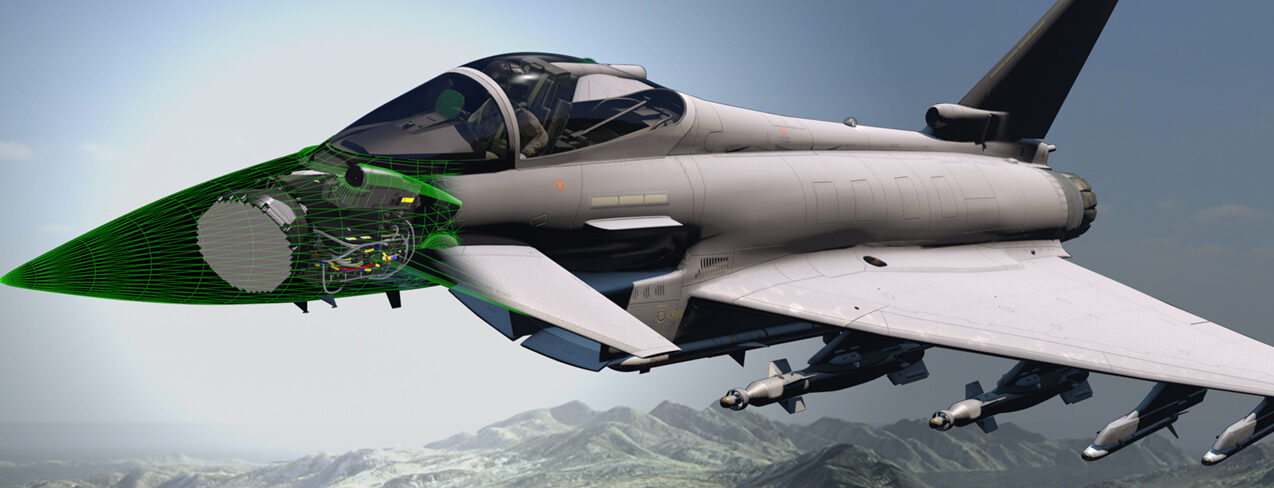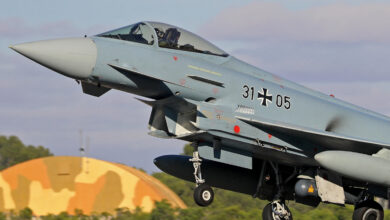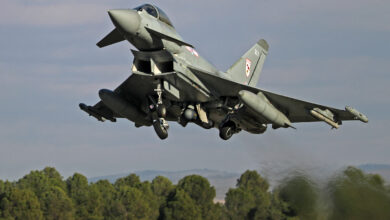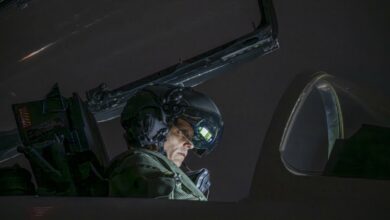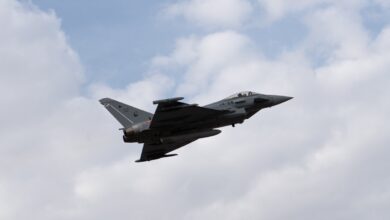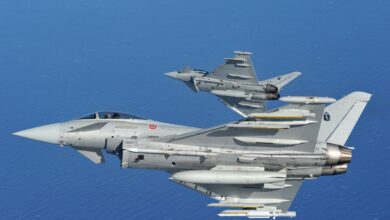EuroDASS Unveils Next-Gen Eurofighter EW Capabilities
The EuroDASS consortium has unveiled details about the Eurofighter Typhoon’s next-gen Praetorian defensive suite following the completion of concept work and technology flight trials.
Consortium partners Leonardo, ELT Group, Indra, and Hensoldt drew from Europe’s sovereign electronic warfare expertise and worked with system integrator BAE Systems to develop the system.
The new system will enhance the aircraft’s situational awareness and survivability, future-proofing it against a range of threats beyond 2060, according to Leonardo.
“Key features will include advanced complex threat characterisation, Digital Radio Frequency Memory capabilities and the provision of interfaces for an external, high-powered electronic attack pod for Suppression of Enemy Air Defence missions, a key NATO requirement,” Leonardo explained in a press release.
“Wideband Active Electronically Scanned Array Electronic Counter-Measures will be provided with increased power for self-protection.”
Praetorian Defensive Aid Sub-System
The existing Praetorian Defensive Aid Sub-System (DASS) has been protecting the aircraft from threats, including infra-red and radar-guided missiles, for over three decades.
It is being upgraded under the Phase 4 Enhancement package, which includes a digital receiver, band extension, enhancements to signal processing algorithms, and processor capabilities.
It will also help it make the most of its integration with Typhoon’s new AESA radar.
The new system will be a “form-fit retrofit option” of the DASS, ensuring ease of integration for newly-built aircraft and retrofitting to existing ones without impacting the aircraft’s contour or flight range.
‘Praetorian eVolution’
The system is based on a data-centric architecture to keep pace with rapidly evolving future threats.
“This includes the provision of high-speed, high-bandwidth infrastructure to transmit raw signal data to an advanced central processing hub,” Leonardo explained.
“This will enable pilots to identify and prioritize multiple complex threats at once, and at greater ranges. Cognitive Electronic Warfare, using AI and machine learning, will exploit the high-fidelity data captured and respond to new threats as they emerge.”
A wealth of data on representative threat scenarios has been gathered during the system’s development phases, supporting further development.

